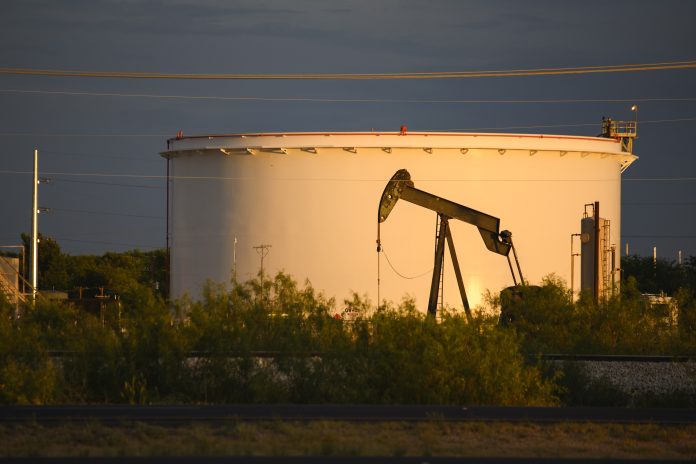
The Chevron Corp. and the Texas Independent Producers & Royalty Owners Association say the Permian Basin is the key to the future growth of American shale production and that its major and independent oil and natural gas companies lead the world in the reduction of gas flaring and methane emissions.
In a Sept. 29 interview with Bloomberg News Chevron Chairman-CEO Mike Wirth said the energy industry will see all-time record demand this year.
“It will grow again in the year ahead,” Wirth said, adding that his company is working to improve costs amid inflation in part by drilling longer horizontal wells and reducing the time it takes to bring wells into production.
“As long as the global economy stays relatively healthy, demand for these products steadily marches forward,” he said.
In its latest oil market report the Paris, France-based International Energy Agency said supply slumped to a nearly two-year low while demand reached record highs in July, attributable to the Kingdom of Saudi Arabia’s cutting production by one million barrels per day at least through the end of this year.
Wirth said Chevron is trying to increase the amount of oil it recovers in the Permian and other U.S. oil fields to boost production further and offset inflation. He said that to improve its 10 percent recovery rate his San Ramon, Calif.-based company is working on various drilling technologies and completion techniques.
Chevron’s current production in the Basin is more than 700,000 barrels of oil per day.
“If we can improve recoveries that changes the entire economic equation in a very profound way and we are working hard on that,” Wirth said.
TIPRO President Ed Longanecker said Chevron’s innovations “are a clear example of operators and producers using the latest technologies to improve recovery rates and successfully reduce emissions.
“As our global economies continue growing, the IEA predicts that oil and gas demand will reach a record of 105.7 million barrels per day in 2028 and global upstream oil and gas investment will rise by 11 percent to $528 billion by the end of 2023,” Longanecker said from Austin. “It’ll be up to our operators and producers in the Permian to help meet that demand while making further investments and fulfilling emission reduction goals.
“The Permian Basin is entering its next act and the world ought to pay attention because Permian producers are setting the gold standard for responsible and remarkable oil and gas production.”
He said new technologies are enabling regional producers quickly to identify and mitigate emissions events and leaks.
“Alongside manual leak detection new methane detection technology like satellites, drones, planes and fixed sensors have enabled producers to monitor their operations more closely,” Longanecker said, adding that the Basin’s barrel of oil equivalent production is 27.9 percent of the national total while Texas’s is 31.8 percent of it.
“Permian producers are embracing new technology to track and address methane and flaring emissions and leading Texas producers like ExxonMobil have made significant operational investments to reduce their emissions footprint. For example Exxon created the Center for Operations and Methane Emissions Tracking, a facility that will monitor sensors across its operations in the Permian Basin 24/7.
“Diamondback Energy invested $20 million in Verde Clean Fuels, a renewable energy company with technology capable of capturing and transforming wasted natural gas from flaring into gasoline, and the Texas Methane and Flaring Coalition has brought together Texas operators committed to working collaboratively to develop the state’s natural resources while improving environmental performance.”
Longanecker said the Oil and Gas Methane Partnership 2.0 Initiative, including Pioneer Natural Resources, ConocoPhillips, Cheniere and Devon Energy, “is the flagship oil and gas reporting and mitigation program of the United Nations Environment Program.
“Project Astra is developing an innovative sensor network for methane detection aimed at reducing methane emissions in a partnership with The University of Texas at Austin, the Environmental Defense Fund, ExxonMobil, Chevron, the Gas Technology Institute, Schlumberger and Pioneer Natural Resources,” he said. “The Environmental Partnership brings together leading U.S. oil and gas producers including many Texas operators to focus on solutions that are technically feasible and commercially proven and it will result in significant emissions reductions.
“Members include Devon Energy, Ovintiv, Exxon, XTO Energy, Pioneer Natural Resources, EOG Resources, Apache, Hess, Hunt Oil, Diamondback Energy and many others. The ONE Future Coalition is a group of more than 50 natural gas companies working together voluntarily to reduce methane emissions across the natural gas value chain to one percent or less by 2025.”



